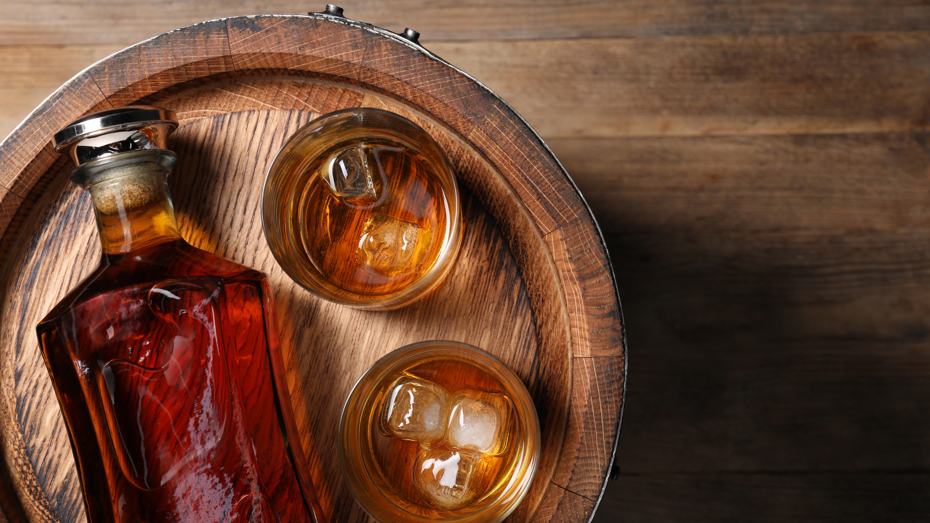The art of crafting bourbon is a testament to patience and precision, where time and environment play pivotal roles in shaping its character. This intricate process, known as aging, is what transforms the clear, potent distillate into a smooth, amber spirit brimming with complexity and depth. At Bourbons.com, we delve into the fascinating interplay between time, environment, and bourbon, unraveling how these elements come together to create a beverage celebrated worldwide for its unique flavors and rich heritage.
The Significance of Time in Bourbon Aging
Time is the silent craftsman of the bourbon world, its influence undeniable in the maturation process. As bourbon ages, chemical reactions between the spirit and the oak barrel impart distinct flavors, colors, and aromas that define the bourbon's profile. This process, while seemingly simple, is remarkably complex, with each passing day adding layers of depth and nuance.
Aging duration varies widely across bourbons, from the minimum legal requirement of two years for straight bourbon to decades-long maturation for ultra-premium expressions. However, more time in the barrel doesn't always equate to superior quality. The optimal aging period depends on the desired flavor profile, with each bourbon finding its balance between the youthful vigor of grain and the mellow richness imparted by time.
The Role of the Environment in Bourbon Aging
While time ticks steadily, the environment in which bourbon ages introduces a dynamic element to the aging process. Temperature fluctuations, humidity levels, and even the placement of barrels within a warehouse can all influence the final product. The environment's role in bourbon aging is a dance between spirit and wood, mediated by the world outside the barrel.
- Temperature Fluctuations: Seasonal temperature changes are crucial for bourbon aging, driving the expansion and contraction of the liquid within the barrels. In warmer months, bourbon soaks into the wood, absorbing the rich flavors and colors. In cooler months, the bourbon contracts, filtering through the charred wood and mellowing in character. This cyclical process enhances the complexity and depth of the bourbon.
- Humidity Levels: The humidity of the aging environment affects the rate of evaporation and the concentration of flavors within the barrel. Higher humidity levels can lead to a higher loss of alcohol over water, potentially softening the bourbon's proof and character. Conversely, drier conditions may concentrate the flavors but also increase the alcohol level, leading to a bolder spirit.
- Warehouse Placement: The location of a barrel within a warehouse can significantly impact the aging process. Barrels stored at higher levels, where temperatures can be more extreme, often age faster due to increased interaction with the wood. Those kept at lower levels may age more slowly, resulting in a different flavor profile. Distillers often rotate barrels or select specific warehouse locations to achieve desired characteristics.
The Science of Wood Interaction
Central to the aging process is the bourbon's interaction with the oak barrel. Oak is not just a container but an active participant in the bourbon's maturation. The charred inside of the barrel acts as both a filter and a flavor incubator, imparting compounds such as vanillin, lignin, and tannins that contribute to the bourbon's aroma, taste, and texture. This interaction is where much of the magic happens, turning a straightforward spirit into a complex symphony of flavors.
Bourbons.com: Your Guide to the Aging Process
At Bourbons.com, we're passionate about educating enthusiasts on the intricacies of bourbon production, including the critical role of aging. Our platform offers a wealth of information on how different aging environments and techniques influence bourbon character, providing insights into the craft behind your favorite spirits. From exploring the nuances of warehouse design to the science of wood chemistry, Bourbons.com is dedicated to unraveling the mysteries of bourbon aging for our readers.
In Conclusion
The aging process is a fundamental aspect of bourbon production, where time and environment work in concert to craft the spirit's identity. This journey from barrel to bottle is a delicate balance, a testament to the skill and patience of bourbon makers. As enthusiasts and connoisseurs, understanding these processes deepens our appreciation for bourbon, enriching our tasting experiences. Dive deeper into the world of bourbon aging with Bourbons.com, where we celebrate the art, science, and heritage of America's native spirit.
Through understanding the role of time and environment in bourbon aging, we gain a deeper appreciation for the complexity and craftsmanship that goes into each bottle. Bourbons.com invites you to explore this fascinating aspect of bourbon production, offering insights and stories that highlight the dedication behind the beloved spirit.

